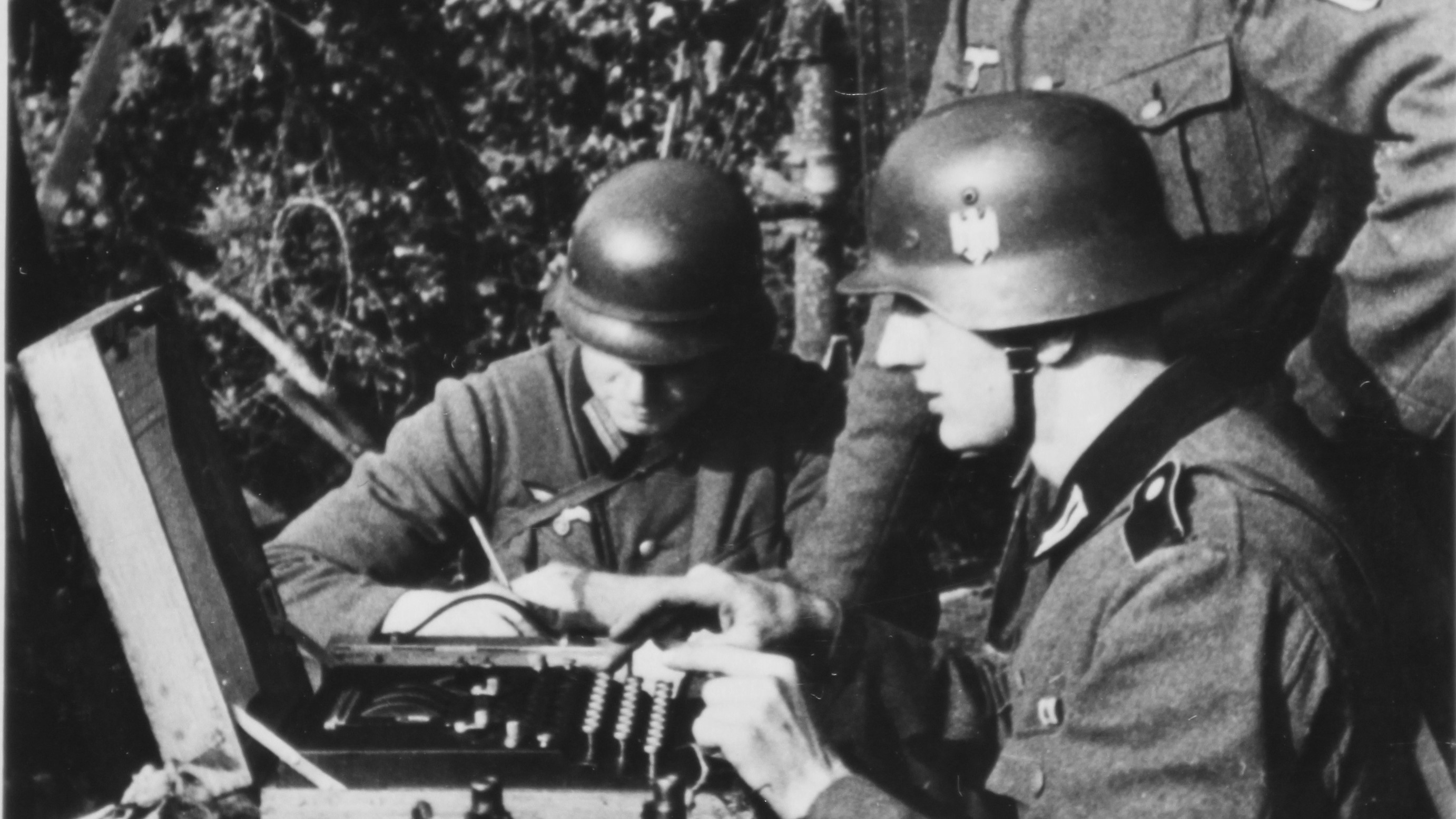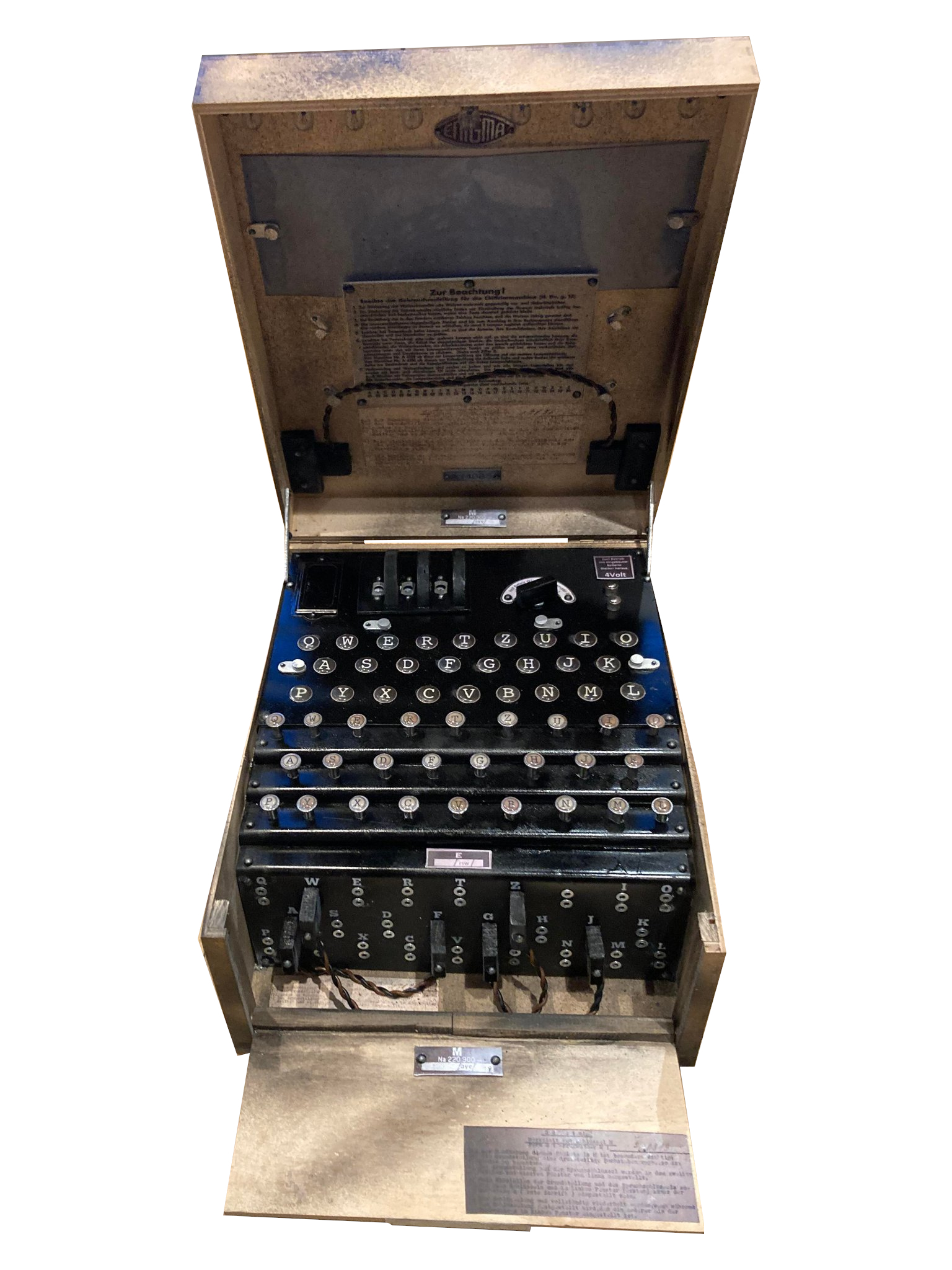
The machine was the brainchild of a German engineer named Arthur Scherbius , who patented the machine in 1918 via the company he co-founded, Scherbius & Ritter. Marketing of the product was initially towards the commercial market, with the brand name of Enigma being introduced from 1923. It has been suggested that this was inspired by Elgar's composition of the same name.
In late 1932, a Polish mathematician named Marian Rejewski successfully broke the Enigma code by applying the theory of permutations and exploiting the poor discipline of the German operators . Additionally, a French spy named Hans-Thilo Schmidt obtained the German cipher materials which included the daily rotor settings. This allowed Rejewski to completely solve the coding, enabling the Poles to reverse-engineer an Enigma machine, permitting real-time reading of all German coded traffic.

Enigma, at its most basic, works by typing in an unencrypted message letter by letter. The internal wiring, combined with the rotor wheels, will select an alternative letter for each one typed. Each time a letter is entered, the rotor settings are moved on one place, re-setting the electrical pathway. By using multiple rotors, the operator will never duplicate the same substituted letter as the original, nor use the same substituted letter more than once. The use of the plug board, at the front of the machine, adds an extra layer of encryption, as it further distorts the electrical pathway within the machine; this was set manually by the operator at time of use. Provided the encrypted message was typed into a second, receiving Enigma machine with identical settings, the message could be decoded and read as initially intended. The upper display lit up when a key was pressed, indicating the substitute letter to be used.
A three rotor Enigma offers 158,962,555,217,826,360,000 possible combinations.
Our Enigma is a museum-quality replica which simulates the basic operation of an actual machine.
If you arrived to this page from our page on Poland, please click here to return.
If you arrived to this page from our page on The War at Sea, please click here to return.
